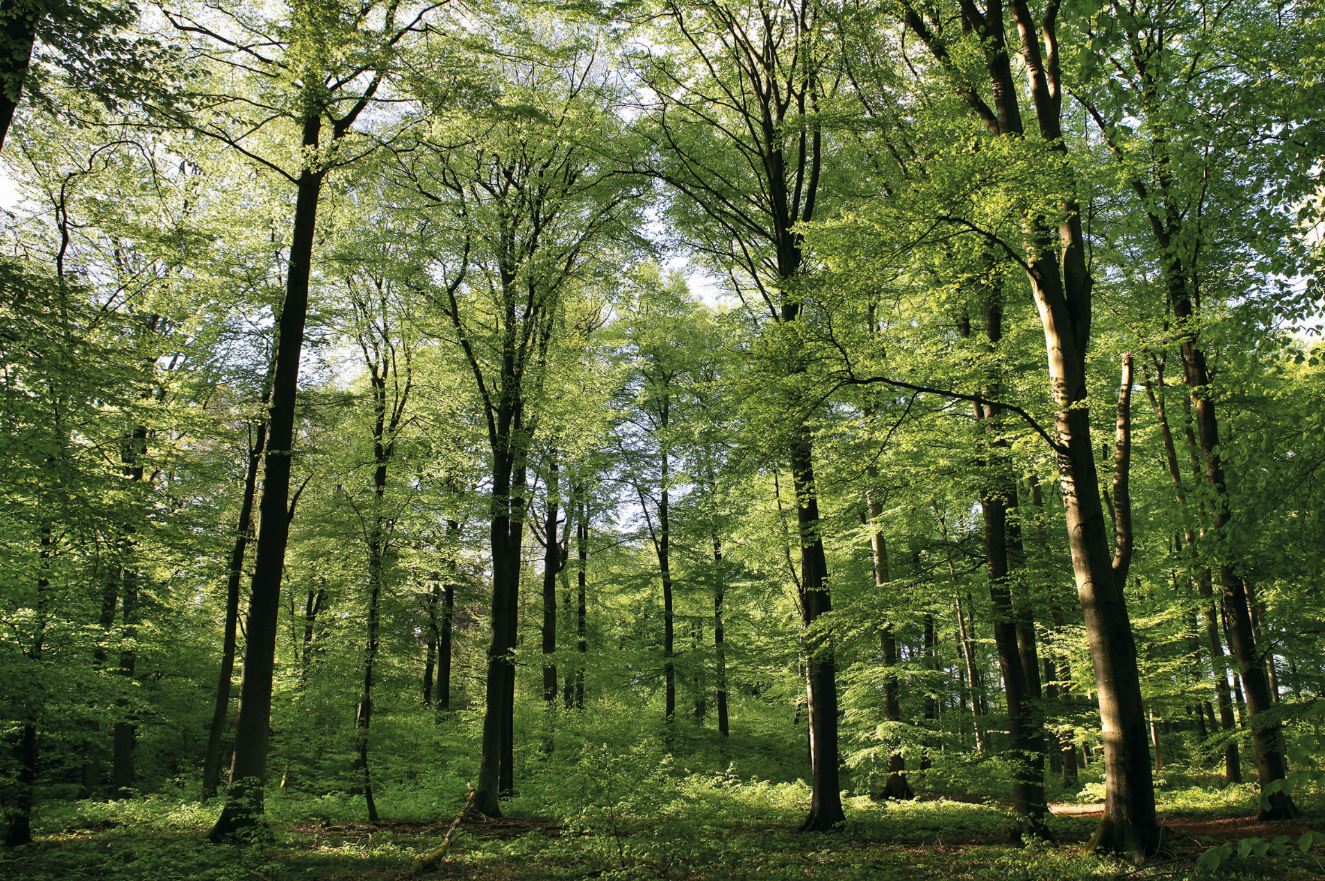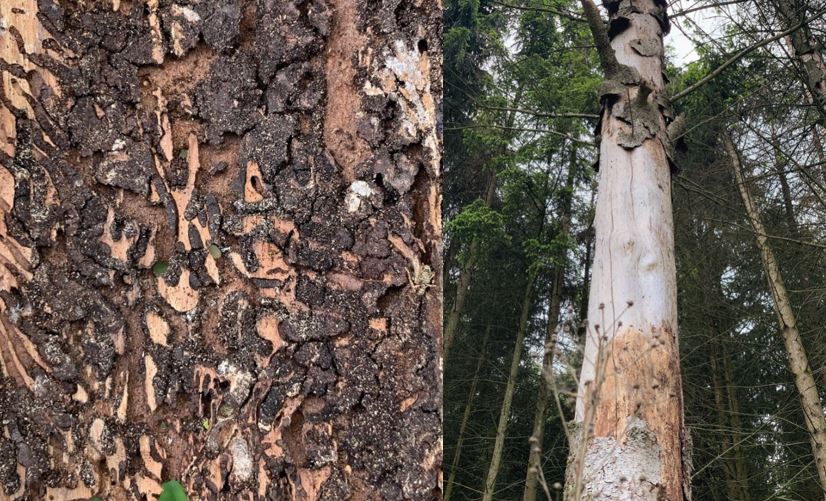Frank Wolter: "It won't be the Same Forest"

Administration of Nature and Forestry of the Grand Duchy director Frank Wolter is concerned about the degradation of Luxembourg's woodland areas. Keys to understanding and courses of action.
INTERVIEW
Sustainability MAG: The latest phytosanitary inventory you published on the state of Luxembourg's forests reveals some alarming figures. What is your reaction?
Frank Wolter: The situation is worrying. We have never had such an adverse result on this inventory. These are observations of about 1,200 trees spread over the entire territory. We are measuring the loss of foliage in the crown, assessing the coloration of leaves and needles, and documenting the presence of pests. Based on these three elements, we deduce the state of stress of the tree and define a damage class.
What we observe is not necessarily the deep state of health of the trees, but rather the clues that the tree provides us. A high state of stress does not necessarily indicate that the tree will die. It can recover, of course, but if the situation persists, then yes, it may not survive because it becomes more sensitive to other pathogens such as certain bacteria, fungi, or insects.
The inventory establishes that 50 % of the trees had already lost more than a quarter of their foliage in the middle of summer or showed other essentials signs of stress. This situation is becoming worrisome, and action must be taken.
Drought is pointed out as the main threat to the grand-ducal forests today. What are the signs you are observing on the ground?
In concrete terms, the tree regulates its temperature in lowering it through transpiration, and this is what you feel when you walk in the forest in summer because it is cooler there. To do this, it needs a certain amount of water in the soil. However, there is a critical threshold below which the roots are no longer able to absorb water from the ground, and from that moment on, the tree stops transpiring and begins to be in a situation of total stress. Its strategy is then to get rid of its leaves, and it becomes lethargic. If this state occurs too early in the season, it has not built up enough sugar reserves to survive the winter. It's a vicious cycle that can then be triggered.
However, what is vital in the context of climate change is to maintain this green lung capable of capturing CO2 and transforming it into the woody matter.
But beech and softwoods are particularly affected. Not all trees are equal in the face of drought.
There are various explanatory factors that come into play. We distinguish between heliophilous trees that like light and warmth, and sciaphilous species that seek shade. Beeches and spruces are sciaphilous trees that originate either in the mountains or in the Nordic countries, and this character has been decisive when they have been affected by extreme temperatures. In the spruce, it is also its type of rooting that has played a role. Indeed, depending on the species, trees have more or less important capacities to draw water, this is linked to their root system. Oak, for example, has a deep taproot, whereas spruce has a tracing root system, which makes it particularly vulnerable to drought.
Some trees are therefore much more vulnerable. The forest will always be there, but it will no longer be the same forest.

In this connection, to face the rapid climate change and the extreme vulnerability of many trees, are you, like other countries, considering importing new species into Luxembourg?
Yes, we're thinking about it. We do not plan to do it on a massive scale, but we are developing trials in arboretums with other species, and we are going to conduct a new trial project with a German scientific institute. Also, we carefully observe the experiments undertaken in neighbored countries in similar conditions.
For the time being, we are trying to use not other species, but from other sources, namely the same species but of a different ecotype. Beech ecotypes from eastern countries, for example, are more resistant to the much hotter and drier summers and have a better chance of survival and adaptation in our regions. We want to avoid basing the future solely on new species. Beech is a globally rare species and is, therefore, a natural ecosystem that needs special protection.
We also seek to accelerate natural regeneration in our forests. The pollens are dispersed over great lengths when trees are reproducing themself, a phenomenon that increases genetic diversity and therefore allows better adaptation through reproduction. It is interesting to note that trees have a much larger ancestral heritage than most other living things, about 10,000 times larger than even humans. This richness is its adaptation strategy because the tree cannot move; it remains in place and must resist crises. We must, therefore, promote the enrichment and adaptationof its genetic heritage.
In concrete terms, how do you intervene to boost this genetic capital?
We must open the forest carefully. Before 1990, in Luxembourg, we had mostly ancient, very closed forests. Stands of beeches in particular with large trees such as cathedrals and nothing else underneath. This situation is not favorable to reproduction and, therefore, to the genetic evolution of the trees.
For several years, we have been thinning out the trees to allow more light to enter and for the fruit that has fallen to the ground to germinate and grow. The right amount of light is essential so that the soil does not dry out when the forest opens.
A significant and growing concern is bark beetles. They mainly attack trees under water stress. Why do these small insects wreak such havoc?
The bark beetles are attracted by the smell of the resin. They drill a hole in the bark to settle in the cambial part. It's an area between the bark and the wood, and sugars are synthesized before feeding the roots. The tree withers when the circulation is impeded. Conifers usually have a natural ability to react through the resin that gulps down insects when they drill a hole. Often, a healthy tree, well supplied with water, will kill the insect. During periods of prolonged drought, it is unfortunately no longer able to make this resin.

Today, 50 % of spruces population are affected by bark beetles.
Have you been able to establish the extent of the phenomenon in the country?
By visual observation, we have been able to establish that about 50 % of spruce stands are now affected by bark beetles. Sometimes, it affects only a few trees. If the presence of the insect is fatal to these trees, it does not condemn the entire stand unless the climatic conditions persist. In reality, it all comes down to summer conditions. If the following summer is dry and hot, the insect's breeding conditions will be optimal, and it will reproduce. Already today, several hundred hectares will have to be cut down. It is quite dramatic because there is a very rapid depreciation of the wood due to the coloring of the forest and the sudden market's saturation. The market price has collapsed by 80 to 90 %. Thus, some farmers have waited between 60 and 100 years to harvest their wood and have lost almost everything in one season.
Indeed, spruce monocultures are regularly fingered. What do you expect from forest owners and managers today?
The message being sent to owners and managers is to convert their monocultures to mixed stands. We can see very clearly with climate change that coniferous monocultures are no longer sufficiently resilient in our climates. Based on scientific research, it is estimated that it is the specific and genetic diversity that will best maintain the health of the forest and its future. It is also an economic strategy, of course, to diversify production to be able to react to uncertainties.
With these increasing episodes of drought, must we prepare ourselves for significant forest fires here in Luxembourg too?
It is something we take very seriously. We have very recently signed up to the European EFFIS warning system to monitor this aspect more closely. The aim is to create a risk index in Luxembourg so that the population can be warned of the risk of forest fires at any time. With this in mind, it should be noted that the risk is much higher for coniferous forests because of the degree of inflammation of the resins, which makes it almost impossible to control fires.
Deciduous forest fires are not of the same nature, and they are often ground fires where low vegetation and foliage that has dried on the ground burns, but the flames very rarely spread to large deciduous trees. About 70 % of our forests are hardwoods. The risk is therefore considered to be lower in Luxembourg.
A new legal framework is under consideration. What can be expected of it?
This new legal framework recognizes the importance of the natural ecosystem and takes into account the services it provides. The medium-term objective is to develop a premium for the ecosystem services provided by public and private forests. The environmental and societal role of public forests is reaffirmed, with particular attention to biodiversity and recreation, and less to production. Relevant provisions protect forests in terms of clear-cutting in particular.
Voices, such as that of forest engineer Peter Wohlleben, call for the preservation of forest sanctuaries, i.e., without any human intervention. How much human intervention are you advocating?
It is crucial not to use 100 % of our forests, and with this, in mind, we have developed a virgin forest project. Currently, 2 % of the forests are already concerned, the objective is to reach 5 %. No wood is harvested from these areas classified as nature reserves according to the nature protection law.
They are dedicated to scientific observation and serve as genetic reserves. On the other hand, when we regenerate our managed forests, we now always keep 10 % in aging patches. This means that we do not cut down any trees. The aim is to preserve small portions of forests of several hectares with ancient trees, places of high biodiversity where birds and bats, in particular, find a lot of deadwood.
What about the rest, where you gather wood?
Timber harvesting as it is done now is entirely different from what was done before. We have taken people's concerns into account. There is no more clearcutting. The new bill requires that for public forests, the forest cover be maintained at all times. Wood can only be harvested on a per-foot basis or in small groups. And in private forests, clearcutting is limited to 50 acres.
We must communicate more when we work in the forest. We need to explain to people why we cut wood, why it is necessary to use this renewable material because, in the context of climate change, it is stored CO2 that can be stored again in a building for another 100, 200, or 300 years. Moreover, it is a substitute for other building materials such as cement or metal, which require a lot of energy to produce. We are trying to get this message across. It should be noted that the population is increasingly urban, and its relationship with nature has changed. We are currently observing a real trend towards the sacredness of life. The management of natural areas is frequently being questioned, even when it is based on real sustainability criteria. An increased effort to raise awareness is, therefore, necessary to reconnect society to nature through a reasoned use of the services it provides us.
-Article published on April 1, 2020-

Frank Walter
Director of the Administration of Nature and Forestry, Luxembourg
Also to be read in the dossier "The Hindered Power of Trees":



